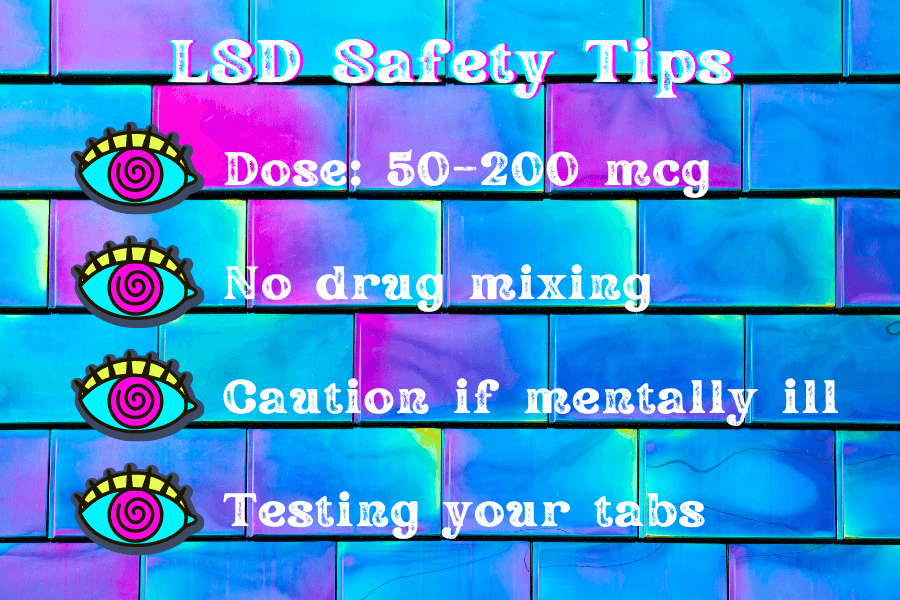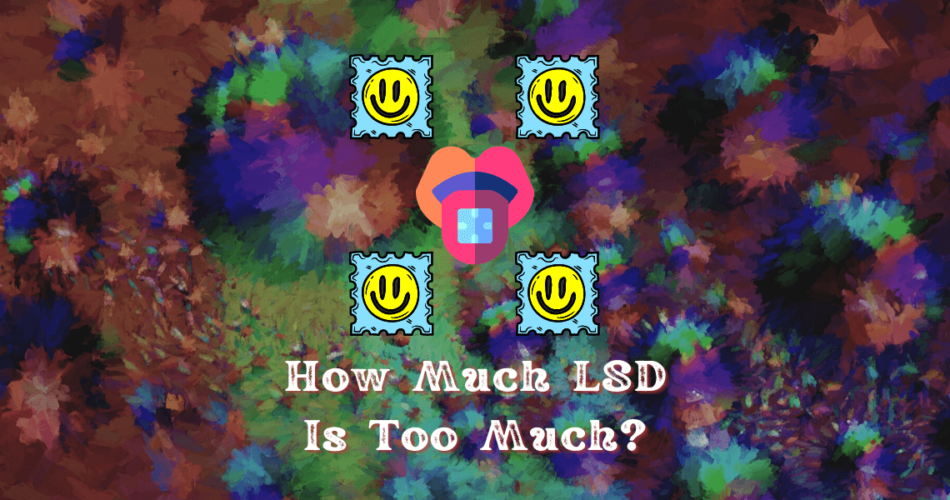There is no definite answer to how much LSD is too much. This is because everyone reacts differently to the drug. However, there are some general guidelines that can be followed in order to avoid an overdose. Keep reading and note them down.
TL;DR
- The normal dose of LSD is 50–200 micrograms 💊
- Doses above 500–1,000 micrograms can cause psychosis or toxicity 🧠🧪
- Mixing other drugs or medications with LSD can be risky even if you stick to a low dose ⚠️
How to Avoid an LSD Overdose or Bad Trip
The effects of hallucinogens can be unpredictable, and how much LSD is too much depends on a variety of factors. For example, how often you’ve taken LSD in the past, how strong your current dose is, how much you’ve eaten recently, and how sensitive to the drug you are.
One of the most important things to keep in mind when taking LSD is how much you are taking. Generally, the normal dose ranges from 50 to 200 micrograms. People have experienced LSD toxicity or psychotic symptoms at doses higher than 500 or 1000 micrograms, so it’s important to be cautious when taking the drug. Other guidelines to follow are:
- Don’t mix LSD with other drugs, lithium, or tricyclic medications.
- If you feel like you’ve taken too much LSD, seek medical attention immediately.
- If you have a history of mental illness (such as bipolar disorder) or other risk factors for psychosis or long-term hallucinations, be particularly careful when taking LSD.

Overdosing on LSD is not easy with a blotter, but it has happened in the past when people thought they were taking cocaine instead of lysergic acid diethylamide. The lethal dose of this psychedelic is not possible to consume intentionally or accidentally.
Long-Term Effects of LSD and Safe Frequency of LSD Use
While LSD is not considered to be physically addictive, and can even be used to treat addiction, some users may experience a moderate psychological dependence if they take the drug regularly. Addiction treatment options are available for such cases. If you are prone to mental health issues such as anxiety or depression, it is especially important to avoid frequent LSD use and take only moderate doses.
How much LSD is too much? Any dose of a hallucinogenic drug that makes you feel uncomfortable or anxious is probably too much. The effects can last 12 hours or more, depending on the dose of LSD.
Editor’s Note 🪶
One of my friends was having a tough time managing his anxiety, so he started taking LSD every weekend to cope. I was worried about him, so I took him to see a doctor. The doc told him that LSD can worsen anxiety in the long run. She suggested taking up yoga or meditation, and to focus on getting enough sleep, eating healthy foods, and exercising regularly. If you’re in the same anxiety-filled boat, don’t turn to drugs – there are better solutions.
Conclusions About Dosage: How Much LSD Is Too Much?
In conclusion, how much LSD is too much or considered to be an overdose? Doses between 500 and 1000 micrograms can cause psychosis and delirium, and higher doses can potentially be toxic. However, the effects of LSD and other psychedelics are highly unpredictable.
Frequently Asked Questions
Is It Safe to Take LSD?
Taking LSD is not without risks and can be dangerous if not taken in a safe and controlled environment. Never do it while you’re alone, depressed, drinking alcohol or taking other drugs.
What Is a Safe Amount of LSD to Take?
The safe amount of LSD to take varies from person to person. To minimize the risk, it’s advised to start with small amounts and increase dosage gradually. 50–100 micrograms is a small enough dose not to harm most people.
What Are the Risks of Taking Too Much LSD?
Taking too much LSD can lead to confusion, anxiety, paranoia, and panic attacks. Physical symptoms may also be present: nausea, vomiting, and increased heart rate. In extreme cases, it can lead to hallucinogen persisting perception disorder (HPPD).
Similar Posts:
- Lethal Dose of LSD (Lysergic Acid Diethylamide) – Is It Real?
- Can LSD Put You in a Coma? Serious Effects of LSD Overdose
- Has Anyone Died From LSD? Studies of Overdose Cases
- What Is LSD Measured In? A Dosage Guide to Lysergic Acid Diethylamide
- Has Anyone Died From LSD? Studies of Overdose Cases
- Can You Overdose on LSD? | LSD Overdose and Bad Trips Explained
- Average Dose of LSD. A Guide to Dosage and Psychedelic Effects




